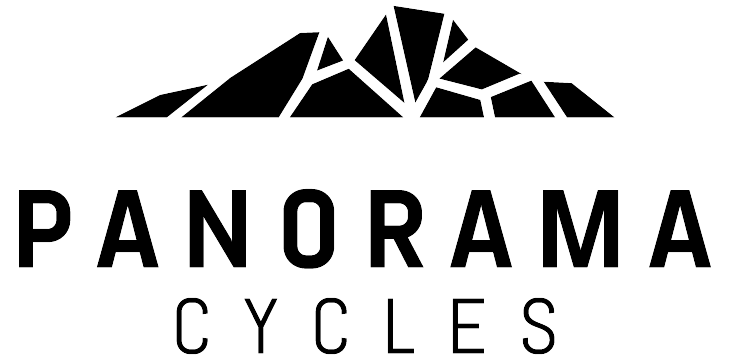Text by Adrian Grant
Photos by messkit magazine / Adrian Grant
On Sunday, July 14 th , I will be participating in the inaugural grand depart of the Butter Tart 700 (BT 700 Bikepacking), a 700+ kilometer bikepacking event beginning in St. Jacobs, Ontario.
The route is approximately 85% gravel/rail trail (with some nice sections of unmaintained thrown in), and loops around rural southern Ontario west of Toronto, along the shores of Lake Huron and Georgian Bay, before it swings back south towards the start.
The region is known for its baked goods, particularly the ubiquitous butter tart, a uniquely Canadian confection that’s sure to fuel the most calorie-deprived cyclist. Unless it has raisins. God help anyone who adds raisins to a butter tart!
The route itself is relatively unusual, as southern Ontario’s high population density doesn’t lend itself to extended bikepacking routes. But the BT 700’s founder, Matt Kadey, an experienced adventure cyclist, appears to have strung together a loop that maximizes off-pavement riding, while taking advantage of the most interesting terrain and scenery the region has to offer.
This should be a great opportunity for folks living in Canada’s most heavily urbanized province to experience a long-distance adventure right on their doorstep, and I am looking forward to participating in what will hopefully become a successful annual event.

This will be my first time using the Katahdin for bikepacking, as most of my previous multi-day adventures have taken place west of Ottawa, where mountain or plus/fat bikes are often necessary to tackle the area’s steep, muddy and chunky ATV trails, forest roads and hydro line cuts. The level of isolation and overall difficulty of these backcountry routes often require that my friends and I be much more self-reliant, as shorter daily distances and less accessible resupply options mean we must carry significantly more gear. At the same time, with their sloping downtubes and suspension components, our bikes are often less spatially adept at carrying significant loads, often leaving us busting at the seams with the required equipment, with little room for the necessities. Like beer.
Conversely, I’ve found that while adventure bikes like the Katahdin allow for greater carrying capacity, gravel-based bikepacking generally provides an opportunity to pack less gear. Specifically, gravel roads are less technical and generally closer to civilization, allowing for big days in the saddle and providing access to multiple resupply options. Meaning you can do away with bulky items like a stove, filter, or excess food. In particular, bikes like the Katahdin tend to maximize the space in the frame triangle, allowing for an oversized framebag to stuff a significant amount of gear, eliminating the need for extra bags and decluttering my overall set-up in the process.
The following is a quick breakdown of my bike and gear for the BT 700.

As a product ambassador for Panorama Cycles, I will have the privilege of riding their new Katahdin gravel adventure bike. This carbon beauty will remain basically stock, with the only change I made for the trip being the addition of a pair of 700×45 WTB Riddlers tires that I will be running tubeless, in an effort to maximize floatation and overall comfort over the route’s long distance.
Bikepacking is still a relatively niche pursuit. So I tend to find that the best bikepacking bags are from small cottage producers, who are often able to make limited runs of unique, custom, or “near-custom” gear, right here in North America.
FRAME BAG – Rogue Panda Designs @smogear Double Decker full framebag. Based out of Flagstaff, Arizona, the company has developed the PandaVision process, which allows for the creation of a fully custom framebag simply by having the bike’s owner send a picture of the bike with a ruler taped to the frame.
SEAT PACK – went a little old-school with this one, electing to go with the Saddle Grafter saddlebag from @AtwaterAtelier, a new bag maker out of Montreal. Admittedly, if I didn’t have such a large framebag I probably would have gone with a more traditional seatpost bag. But as the contents will most likely be limited to a change of clothes, camp sandals, and rain gear, this bag’s ~11 liter capacity ought to be more than sufficient.
HANDLEBAR BAG – Porcelain Rocket Horton handlebar system. Porcelain Rocket (see @porcelainrocket on Instagram) is an established bag maker out of Calgary, Alberta, and the Horton their unique take on a minimalist handlebar bag. Designed with both flat and drop bars in mind, the cradle can accept up to a 15 liter dry bag, while the separate welded-seam weather-proof accessory pocket will ensure that I have quick access to smaller items (head lamp, camera, pain meds) that I don’t want to get lost in my framebag.
COCKPIT BAGS – the only downside to using a full framebag is losing access to your bottle cages. To address this issue, I will be using two Rogue Panda Designs Bismarck Bottle Buckets. These are essentially stem bags with integrated bottlecages, offering secure water retention and multiple side-pockets for snacks, bug spray and suntan lotion. My trusty Revelate Designs top-tube bag completes my set-up, and will be used to store power packs for my phone and more snacks.
*Sleep System *
Over the last couple of years, I have fully transitioned to a hammock as my main sleeping system. This includes a @HennesseyHammock Explorer Deluxe hammock with an extra-large tarp, and a few mods for ease of set-up, a Western Mountaineering down sleeping bag, and a Jack ‘R Better (Hulmeville, Pennsylvania) summer-weight down underquilt.
*Other*
There are various odds and ends I’ll be carrying with me, including but not limited to a spare set of clothes, a rain jacket, camp sandals (never underestimate the value of happy feet), tools/repair kit (two spare tubes, tire plugs, multi-tool, pump and a quick link), camera, charger, lights/headlamp, various toiletries and medical supplies. I will be relying on my phone’s Gaia GPS app, which includes access to the invaluable Ontario Backroads Mapbook, for navigation, and two power packs to keep it charged.
The @BT700 is billed as an adventure — not a race. This is perfect, because I plan on enjoying myself. So while my goal is to finish in five days, I hope to complete any big mileage days at a leisurely pace by starting early in the day, and taking multiple extended rest stops at general stores, pubs, and breweries as required.










